Beyond the Demonstration Fusor – NUCLEAR FUSION!

Alex, seen with the ongoing fusor project at the end of October, 2006
When this picture was taken, the helium 3 neutron detector had been temporarily mounted in the still unfinished moderator. The moderator is the white, 6 inch diameter tube between the bell jar and the meters. When completed, it would contain almost 20 pounds of paraffin.
Update: See Neutron Detector for a picture of the detector installed in the completed paraffin moderator.
Two capacitive manometer vacuum gauges can be seen, both with a range of zero to .1 Torr. When the picture was taken, the cable to the MKS Baratron (below and to the left of the bell jar) was not connected. It is measuring the pressure within the bell jar itself.
The Boc Edwards Barocel unit (partially blocking the view of the bell jar) is measuring the pressure at the inlet of the diffusion pump, before the throttling valve.
The outlet of the Veeco diffusion pump is shown connected to the inlet of the 2 stage Leybold D16a vane-type pump. Alex’s hand is on the Variac which controls the fusor voltage.
At this time we still did not have a source of deuterium.
SUCCESS!
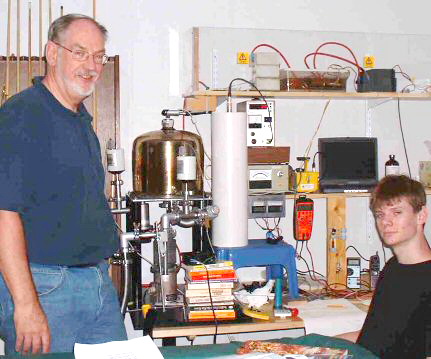
July 22, 2007 – just after the first successful fusion attempt.
Worldwide, this is believed to be the 23rd successful demonstration of D-D fusion by amateurs, and the first to use heavy water as the source of Deuterium.
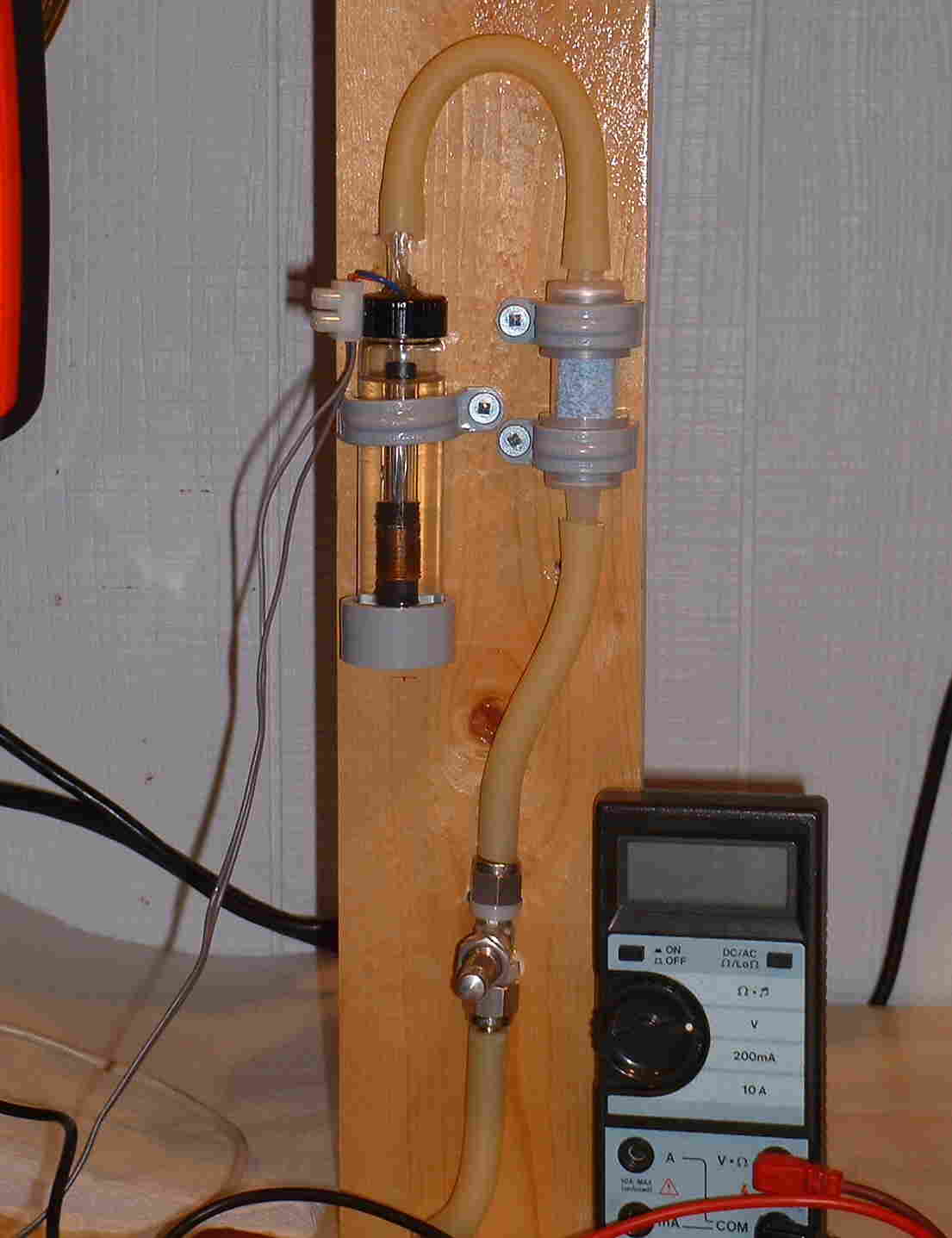
The apparatus used for electrolysis of heavy water, to obtain Deuterium.
After the metering valve, a tube connects to 6 feet of .005 in ID capillary tubing, then to a shutoff valve at the fusor. For more details, see Deuterium
It is based on a design by Andrew Seltzman.
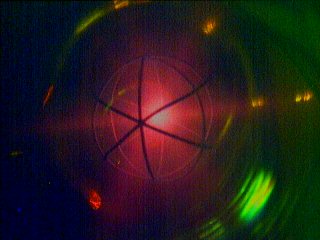
Frame taken from webcam used to record the first fusion attempt. A Phillips Toucam webcam was used because of its low light capabilities.
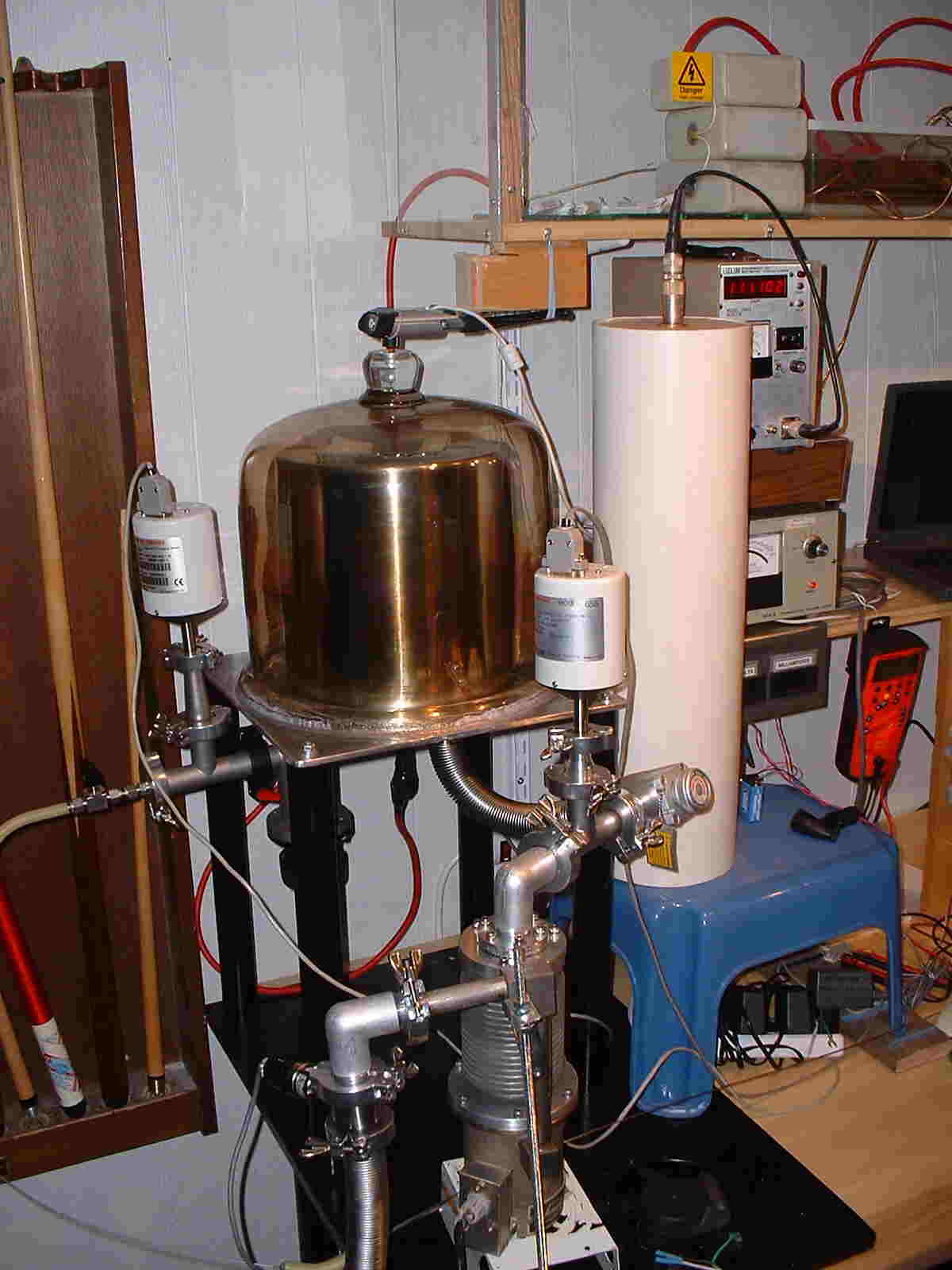
FUSOR SETUP
The Deuterium tube and shutoff valve can be seen just below and to the left of the bell jar. The webcam can be seen directly above the bell jar.
The first detection of neutrons happened almost as an afterthought, and occurred when the deuterium supply was first being assembled and tried out. The diffusion pump was not powered. Only the roughing pump was in use.
The electrolysis equipment had been powered up and the deuterium being produced was allowed to purge the drierite and the tubing. The tubing was then connected at the fusor but the valve at the fusor was kept closed. The fusor pressure was about 2-3 microns when the deuterium valve was opened. The pressure in the fusor shot up to around 90 – 100 microns. The deuterium valve was closed and the fusor again evacuated down to around 3 microns.
Again the deuterium valve was opened, and this time left open while the metering valve was adjusted. The high voltage was on, and as the pressure dropped and the voltage rose, the neutron counter started to register significantly higher than background counts!
We recorded a series of 2 minute counts, then finished by turning off the power and measuring the background, which was still around 16 counts per minute, or 32 counts per 2 minute period.
We weren’t setting any records, but we had definitely achieved fusion!
Results of First Fusion Attempt, July 22, 2007 – 2 Minute Runs
- V= 15.4 KV I= 8.4 mA P= 12.27 microns Count: 424
- V= 15.2 KV I= 8.5 mA P= 12.38 microns Count: 437
- V= 15.1 KV I= 8.6 mA P= 12.52 microns Count: 414
- V= 15.2 KV I= 8.4 mA P= 12.44 microns Count: 463
- V= 15.5 KV I= 8.2 mA P= 12.4 microns Count: 445
- V= 15.4 KV I= 8.4 mA P= 12.27 microns Count: 424
- V= 15.2 KV I= 8.5 mA P= 12.38 microns Count: 437
- V= 15.1 KV I= 8.6 mA P= 12.52 microns Count: 414
- V= 15.2 KV I= 8.4 mA P= 12.44 microns Count: 463
- V= 15.5 KV I= 8.2 mA P= 12.4 microns Count: 445
In short, our best runs were averaging around 220 counts per minute from our He3 detector, versus a background of around 16.
This corresponds to a little less than 2000 neutrons per second.*
On July 26th, a 2-minute count of 1373 was recorded, at 18.6 KV, 3.9 mA and a pressure of 12.36 microns. This corresponds to over 5000 neutrons per second.*
*We subsequently calibrated our He3 counter against a BTI bubble detector (see below), but at the time the best we could do was extrapolate from figures provided by Jon Rosenstiel. He uses a similar He3 tube, and uses the same operating voltage that we used.
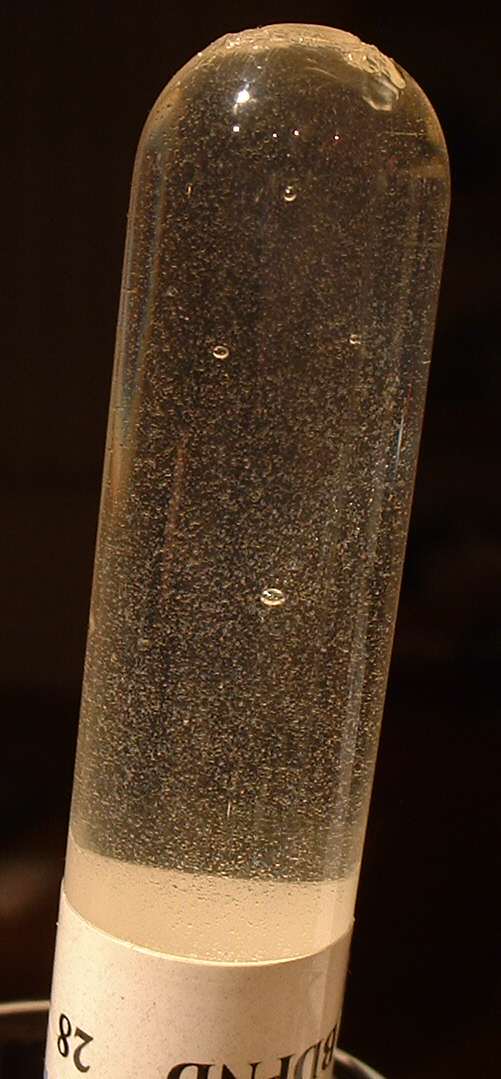
On September 14, 2007, an extended run was completed with a BTI PND 28 Bubble Neutron Detector placed close to the bell jar.
Shown here is the result: 4 bubbles!
(The BTI Bubble Neutron Detectors – made to be used as neutron dosimeters – react only to high energy neutrons, and provide fairly convincing proof of D-D fusion.)
Link to the announcement of our first successful fusion attempt,
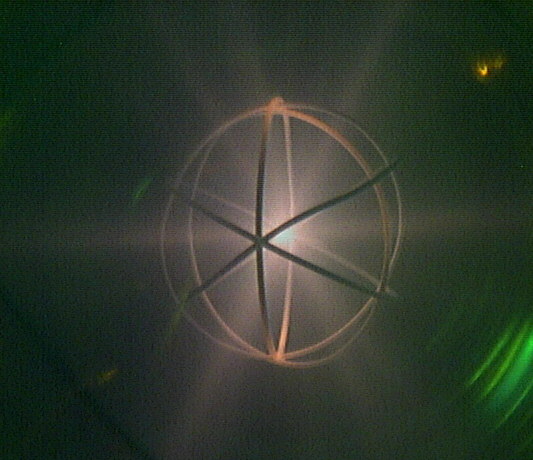
CALIBRATION RUN
On September 23, 2007, a 40 minute fusor run was carried out at 25,000 volts and 8 mA to calibrate the He3 counter.

Eleven bubbles were formed in the bubble detector, which has a sensitivity of 28 bubbles/mRem and which was located 19 cm from the poissor.
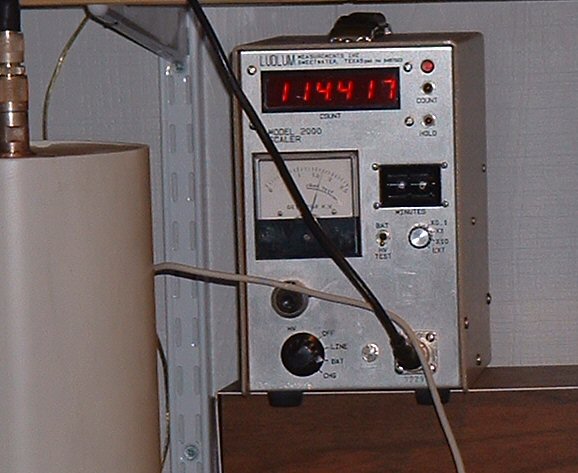
The average rate of neutron production during the 40 minutes was therefore 21,393 neutrons per second.Total count on the He3 counter was 114417.
Therefore, in its present location,to convert counts per minute on our He3 counter to neutrons per second, it would seem that we could merely multiply by 7.48. However, there is a problem with trying to extrapolate from a count of only eleven bubbles.
BTI, the manufacturer of the bubble detectors has an Information Note discussing this problem. They suggest that around 100 bubbles needs to be used, to achieve a confidence level of plus or minus 20%, 19 times out of 20.
With this in mind, we did a total of 5 additional fusor runs, over a period of several days.
RESULTS of the ADDITIONAL RUNS, SUMMARIZED
Total run time: 340 minutes
Total Bubbles: 109
Total Counts from He3 detector: 1,026,869
Average background count (due mostly to cosmic rays): 17 / minute, or a total of 5780 counts over the 340 minutes.
Total counts from He3 detector minus estimated counts due to background: 1,021,089
Average neutron production over the 340 minutes, assuming 28 bubble/mRem sensitivity and the bubble detector placed 19 cm from the poissor:
60/340 x 8 x 109/28 x 4538 equals 24,940 neutrons/second
Average He3 counts/minute at this rate: 3003
Derived sensitivity of the He3 counter at its present location:
24,940 / 3003 equals 8.305 neutrons/second for each He3 count per minute.
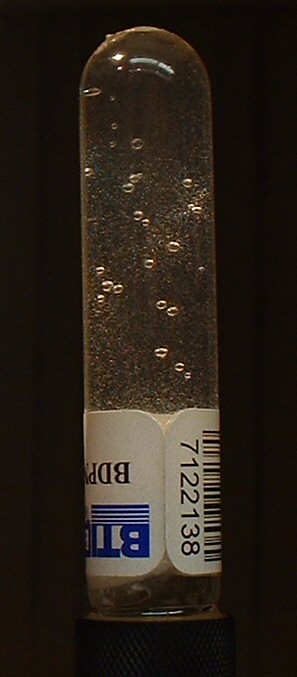
27 Bubbles!, Sept 27, 2007
In other words, as long as we don’t move the detector, we can take our counts/minute from our He3 detector, and multiply it by 8.305 to get the rate of neutrons per second.
With a confidence level of better than plus or minus 20%, 95% of the time!
How can we be sure that nuclear fusion is taking place?
Next: Nuclear Fusion proof
![]()
